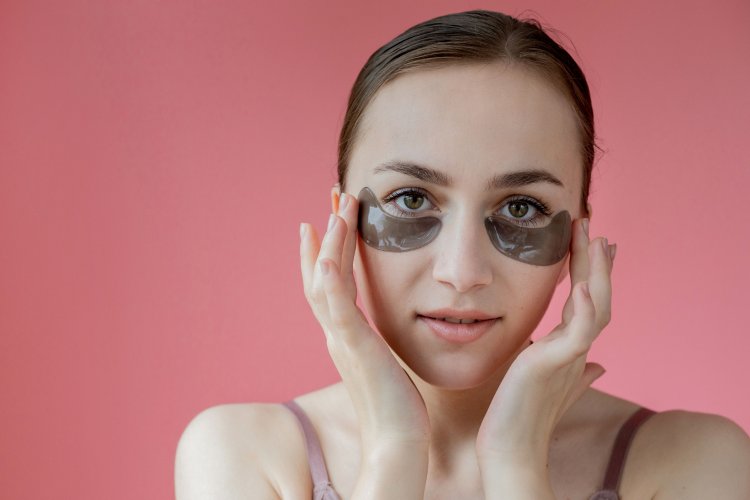How to Reduce Under-Eye Bags: Tips and Treatments
Under-eye bags, often characterized by a swollen or half-moon appearance beneath the eyes, are a common concern for many. While they are often associated with lack of sleep, the causes behind under-eye bags can vary. However, there are numerous at-home and professional treatments available to help diminish their appearance, addressing their diverse origins.

Understanding the Causes of Under-Eye Bags
Under-eye bags typically arise due to factors such as excess fluid retention or the presence of fat deposits in the area. These can be influenced by various factors including:
Aging and Genetics
The natural aging process can lead to changes in the distribution of fat and tissue under the eyes, contributing to the prominence of under-eye bags. Genetic predispositions may also play a role, with some individuals being more prone to this issue if it runs in their family.
Allergies
Allergens can trigger inflammation and congestion in the sinuses, causing the under-eye area to become swollen and sometimes discolored or itchy.
Fluid Retention
Consuming a high-sodium diet or experiencing dehydration can result in fluid retention throughout the body, including under the eyes, leading to puffiness.
Sleep Deprivation
Inadequate sleep or sleeping without proper head elevation can impact skin health, resulting in the formation of under-eye bags and dark circles.
Infections or Health Conditions
Various eye-related infections or health conditions such as conjunctivitis (pink eye), blepharitis, or certain thyroid disorders can contribute to under-eye puffiness.
While under-eye bags can affect anyone, certain individuals, such as those with a family history of the condition or older individuals, may be more predisposed to developing them.
Home Remedies for Under-Eye Bags
Depending on the underlying cause of under-eye bags, several home remedies can help alleviate their appearance:
- Cool Compress: Applying a cool compress to the under-eye area can help reduce inflammation and constrict blood vessels, thereby diminishing puffiness and dark circles.
- Retinol Products: Over-the-counter eye creams containing retinol can aid in resurfacing the skin under the eyes, promoting cellular turnover and reducing puffiness.
- Vitamin C Products: Eye creams enriched with vitamin C can help improve skin firmness and reduce puffiness by stimulating collagen production and protecting against UV damage.
- Caffeine-Based Products: Topical application of caffeine can help constrict blood vessels and reduce swelling, making the under-eye area appear less puffy.
- Green and Black Tea: Cold tea bags, particularly green or black tea, can be applied to the under-eye area to capitalize on their antioxidant, caffeine, and anti-inflammatory properties, which promote blood flow and reduce puffiness.
- Gentle Skin Massage: Massaging the under-eye area in upward and outward motions can promote lymphatic drainage, reducing fluid buildup and inflammation.
- Allergy Management: If allergies are contributing to under-eye bags, over-the-counter antihistamines or antihistamine eye drops can help alleviate puffiness and irritation.
Professional Treatments for Under-Eye Bags
For individuals seeking more immediate or intensive solutions, professional treatments are available:
- Chemical Peels: Chemical peels utilize controlled acid application to remove outer skin layers, resulting in smoother under-eye skin texture.
- Injectable Fillers: Injectable fillers can temporarily restore volume to the under-eye area, reducing hollowing and improving skin texture.
- Laser Resurfacing: Laser treatments can tighten skin, minimize blood vessel dilation, and reduce pigmentation, effectively addressing under-eye puffiness and discoloration.
- Cosmetic Surgery: In severe cases, surgical procedures like blepharoplasty may be recommended to remove excess fat or skin, providing a long-term solution for under-eye bags.
Preventing Under-Eye Bags
While not all under-eye bags are preventable, adopting certain lifestyle habits can help minimize their occurrence:
- Sun Protection: Regular use of sunscreen can protect the delicate skin around the eyes from UV damage, preserving collagen and elastin integrity.
- Adequate Sleep: Prioritizing quality sleep and maintaining proper head elevation can prevent fluid accumulation and puffiness.
- Stress Management: Stress-reducing techniques such as exercise, meditation, and deep breathing can help regulate cortisol levels, reducing inflammation and skin aging.
- Healthy Diet: Limiting sodium intake and staying hydrated can prevent fluid retention, minimizing under-eye puffiness.
- Smoking Cessation: Quitting smoking can prevent skin thinning and collagen loss, reducing the likelihood of under-eye bags.
When to Seek Medical Advice
While under-eye bags are often a cosmetic concern, certain symptoms may warrant medical attention:
- Pain, discomfort, or itching in the under-eye area
- Redness, discoloration, or sudden puffiness
- Any changes affecting quality of life
Consulting a healthcare provider can help identify underlying causes and determine appropriate treatment options.
Under-eye bags can be distressing, but with the right approach, their appearance can be minimized. Whether through at-home remedies, professional treatments, or preventive measures, addressing under-eye bags can contribute to overall skin health and confidence. By understanding the underlying causes and exploring effective solutions, individuals can achieve a refreshed and revitalized under-eye appearance.
#UnderEyeBags #ReducePuffiness #HomeRemedies #ProfessionalTreatments #EyeSkincare #DarkCircles #EyeBagsCauses #CosmeticSurgery #SkinCareTips #HealthySkin #BeautyTips #AntiAging #SelfCare
Disclaimer:
The information provided in this article is for educational purposes only and should not be considered medical advice. If you have any health concerns or are experiencing symptoms, it is important to consult with a healthcare professional, such as a doctor or clinic, for proper diagnosis and treatment. Always seek the advice of your doctor or other qualified health provider with any questions you may have regarding a medical condition. Do not disregard professional medical advice or delay in seeking it because of something you have read in this article.
What's Your Reaction?





















